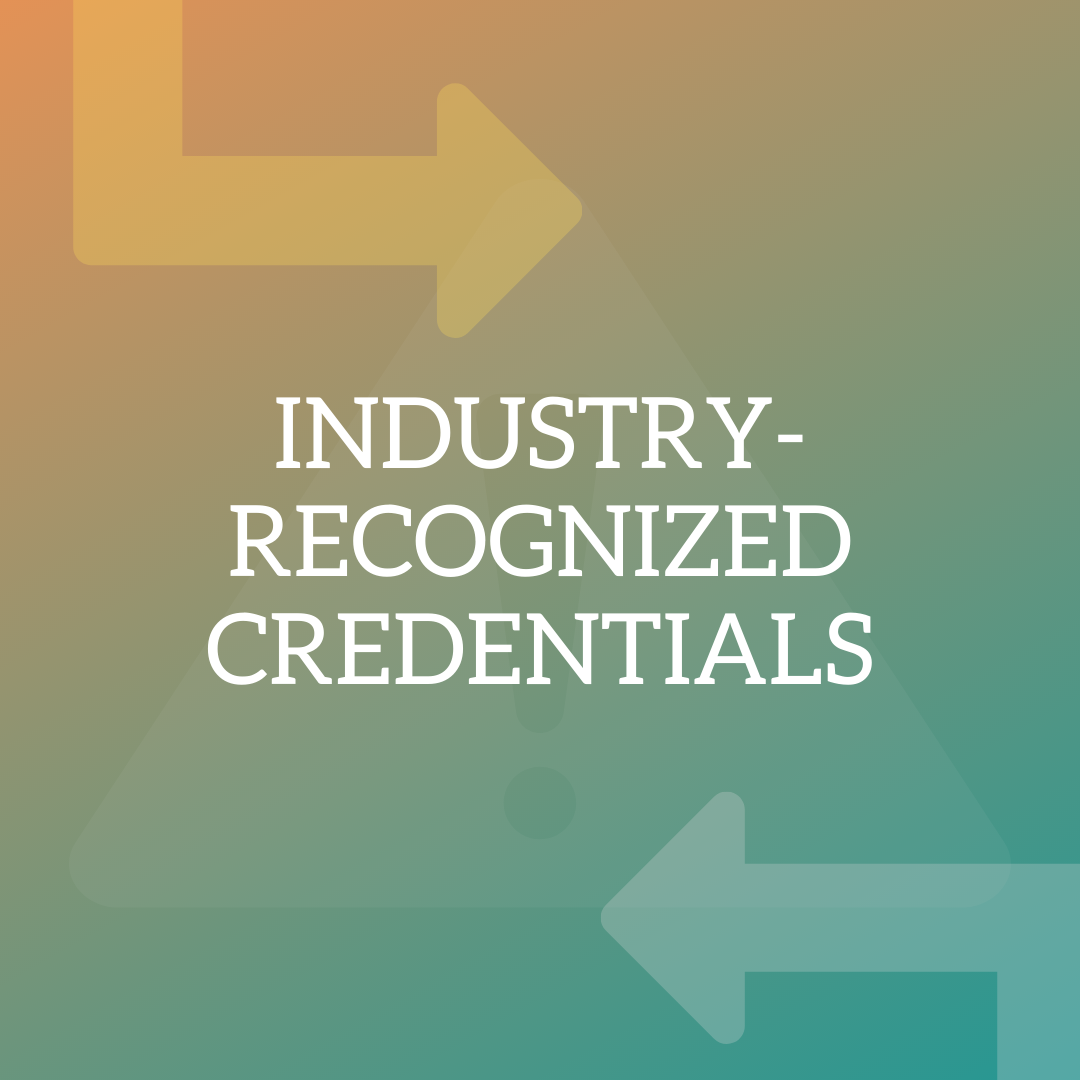 Industry-recognized credentials are an essential component of any high-quality Career Technical Education (CTE) program. They indicate the entry-level competencies learners need in a given career field and signal to employers that an individual is prepared for work. But in the midst of a global pandemic, with nearly every state issuing, to varying degrees, stay at home orders that have resulted in school closures and limited access to testing facilities, how can learners continue to earn industry-recognized credentials?
Industry-recognized credentials are an essential component of any high-quality Career Technical Education (CTE) program. They indicate the entry-level competencies learners need in a given career field and signal to employers that an individual is prepared for work. But in the midst of a global pandemic, with nearly every state issuing, to varying degrees, stay at home orders that have resulted in school closures and limited access to testing facilities, how can learners continue to earn industry-recognized credentials?
Over the last decade, there has been a groundswell around industry-recognized credentials. Driven by the Lumina Foundation’s campaign to ensure that 60 percent of U.S. adults hold a credential beyond high school by 2025, nearly every state has set its own postsecondary credential attainment goal. What’s more, many states are also counting industry-recognized credential attainment in their high school accountability systems or are promoting credential attainment through programs such as Virginia’s New Economy Workforce Credential Grant Program.
Challenges for Industry-recognized Credential Attainment
COVID-19 (Coronavirus) threatens to stall many of these policies and initiatives. The requirements for earning an industry-recognized credential vary by type and by provider, but are hard to deliver remotely. Industry-recognized credentials commonly require one or a combination of the following:
- Contact hour requirements: Certain certifications and licenses require individuals to complete a course or training led by a qualified instructor before they are eligible to sit for the exam.
- Clinical or practical experience: Some credentials, primarily state-issued licenses, have clinical hour or work-based learning requirements. This is particularly true for health-related credentials such as the Certified Nursing Assistant (CNA), Licensed Practical Nurse (LPN) and Registered Nurse (RN) licenses.
- Assessments: Virtually every industry certification or license requires an assessment of competency, and many of these assessments are only available through certified proctors or approved test providers.
As states have shut down one by one, credentialing opportunities have slowed to a trickle. School districts, institutions of higher education and training providers have been challenged to offer the learning and practical experiences learners need to be eligible for credential exams. Further, testing providers have had to shut their doors or limit access in order to comply with stay at home orders.
The State Policy Response
The implications of this credentialing slowdown are myriad. For one, many states have baked credential attainment into high school graduation requirements, accountability systems and postsecondary performance-based funding structures. These requirements will need to be waived or loosened in a way that limits harm to learners. In Ohio, the Department of Education has already amended high school graduation requirements for learners pursuing industry-recognized credentials and is allowing learners to earn credentials as soon as it is safe to do so – even if they already have been awarded a diploma.
Other states are exploring remote proctoring so learners can sit for an industry-recognized credential exam at home. Florida issued guidance for at-home testing for industry certifications, which will allow learners to access exams for credentials on the state-approved Career and Professional Education Act (CAPE) list as long as the credential providers meet certain conditions. However, while a number of credential providers are now offering online proctoring opportunities that are secure and monitored, the technology is expensive to scale and requires the learner to have access to a computer and reliable internet at home.
The second implication is that credentialing is slowing down at a time when states hit hardest by the coronavirus are experiencing a critical shortage of licensed healthcare workers. In response, governors are issuing emergency licensing waivers in order to permit nursing and medical students as well as retired professionals or those with expired licenses to support the relief effort. In California, for example, the state Board of Registered Nursing has developed guidance on different roles nursing students can play in the field based on competencies developed through prior course taking.
Finally, with economists already predicting a severe economic downturn as a result of the coronavirus, states will need to accelerate credentialing opportunities for learners transitioning back to work. Even as schools and testing facilities remain closed, states can start thinking now about their economic recovery plan and how to bolster industry-recognized credential attainment in the months and years ahead.
Austin Estes, Manager of Data & Research
